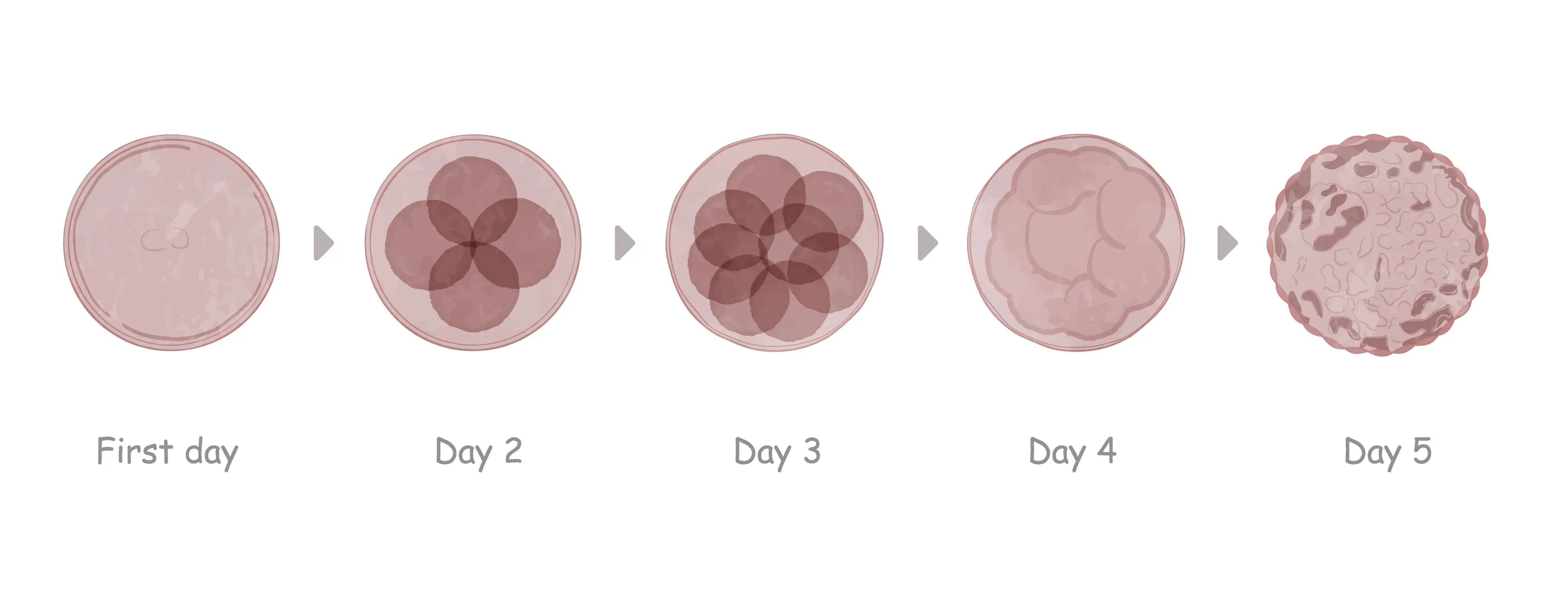Enhancing IVF Success with Embryo Grading: Expert Tips and Insights

With the introduction of in-vitro fertilisation (IVF), the reproductive medicine landscape has dramatically transformed, giving a chance to have children to countless couples facing infertility. The effectiveness of IVF can be highly optimised by grading the embryos, which is one of the most crucial steps. Embryologists determine which embryos have the best chance of turning into a fetus and into a full-term pregnancy with the help of this evaluation of embryo grading.
What is Embryo Grading?
Before implantation, embryologists use a process called “embryo grading” to evaluate the quality and viability of the embryos. Using this technique, embryos are graded according to their morphology and development, usually between days 3 and 5 of fertilisation. The aim is to find the embryos with the best chance of implantation and growth into a viable pregnancy. Hence embryo grading and success rates of IVF are interlinked.
Usually, on day three, embryos are in the cleavage stage and comprise 6-10 cells. These embryos are evaluated by embryologists using a number of standards:
- Cell Number: Ideally, embryos should have 6-10 cells on day 3.
- Cell Uniformity: Uniform cells indicate healthy division, while varying sizes may suggest developmental issues.
- Fragmentation: Low fragmentation (less than 10%) is preferable, as high fragmentation can hinder embryo development.
Embryo Grading Chart: A Visual Guide to Quality
An embryo grading chart is a visual aid for embryologists to evaluate and categorise embryos systematically. The chart typically includes grades such as:
- Grade A (or 1): High-quality embryos with optimal cell number, low fragmentation, and good symmetry.
- Grade B (or 2): Embryos with minor imperfections but a good prognosis.
- Grade C (or 3): Embryos with more noticeable issues, such as higher fragmentation or asymmetry, but still potentially viable.
- Grade D (or 4): Poor-quality embryos with significant abnormalities; these are less likely to result in a successful pregnancy.
Patients and embryologists can better comprehend the chances of successful implantation and development using these gradings.
The Process of Embryo Grading in the UK
Stringent guidelines are put into place in the UK to ensure precise and consistent embryo grading. Fertility clinics are regulated by the Human Fertilisation and Embryology Authority (HFEA) to ensure that they follow the guidelines. The regulatory structure guarantees that patients receive accurate information regarding the quality of their embryos and their probability of successful IVF outcomes.
Expert Tips for Improving IVF Success Rates with Embryo Grading
- Choose a Reputable Clinic
Choosing the right IVF clinic is a significant factor that impacts the success of the treatment. While searching for the right clinic, consider higher success rates and experienced embryologists. Consult with various clinics and do your research to zero down on the one that offers a supportive environment and aligns with your IVF needs.
- Enhancing Egg Quality
Your overall lifestyle significantly impacts the quality of your eggs and embryos. Avoid recreational drugs, exercise regularly, and maintain a balanced diet rich in vitamins and minerals. Supplements such as folic acids and prenatal vitamins can help support your reproductive health.
- Consider Preimplantation Genetic Testing (PGT)
Preimplantation genetic testing (PGT) can be an insightful tool in your IVF journey. PGT makes selecting the healthiest embryos possible by scanning embryos for genetic abnormalities before implantation. This can lower the chance of genetic problems and raise the possibility of a successful pregnancy.
- Optimize Sperm Health
Fertility in men is as significant. Sperm quality can be improved by supplements, a healthy diet, frequent exercise, abstaining from tobacco and excessive alcohol use, and more.
- Blastocyst Transfer
Opt for a blastocyst transfer whenever viable. Compared to earlier-stage embryos, blastocysts have a higher implantation rate, which raises the likelihood of a healthy pregnancy.
Advances in Embryo Grading Technology
Technological developments have recently improved the precision and consistency of embryo grading. For instance, time-lapse imaging allows embryologists to continuously monitor embryo development, enabling a more thorough evaluation than would be possible with static observations. This technology can detect minor variations in embryonic development that could go undetected when using traditional grading techniques.
Personalised IVF Protocols
Since each woman’s IVF journey is different, personalised IVF protocols tailored to the patient’s specific needs can also enhance the chances of success. Factors such as age, ovarian reserve, and previous IVF outcomes are considered to customise treatment plans. This personalised approach can optimise the quality of the eggs and embryos, contributing to better outcomes.
Conclusion
Embryo grading, an essential component of IVF success, offers crucial details about the viability of the embryos. Understanding the specifics of embryo grading and following professional advice will significantly improve your chances of a successful IVF procedure. Remain educated, seek assistance, and have faith in the process; you will eventually become a parent, one step at a time. Not every IVF procedure or requirement is identical, but with the correct medical advice and strategies, you can confidently overcome the challenges of IVF.
Contact IVF London for additional individualised guidance and assistance. We can help you with your distinct IVF journey. With the correct knowledge and assistance, your ambition of becoming a parent might become a reality.






